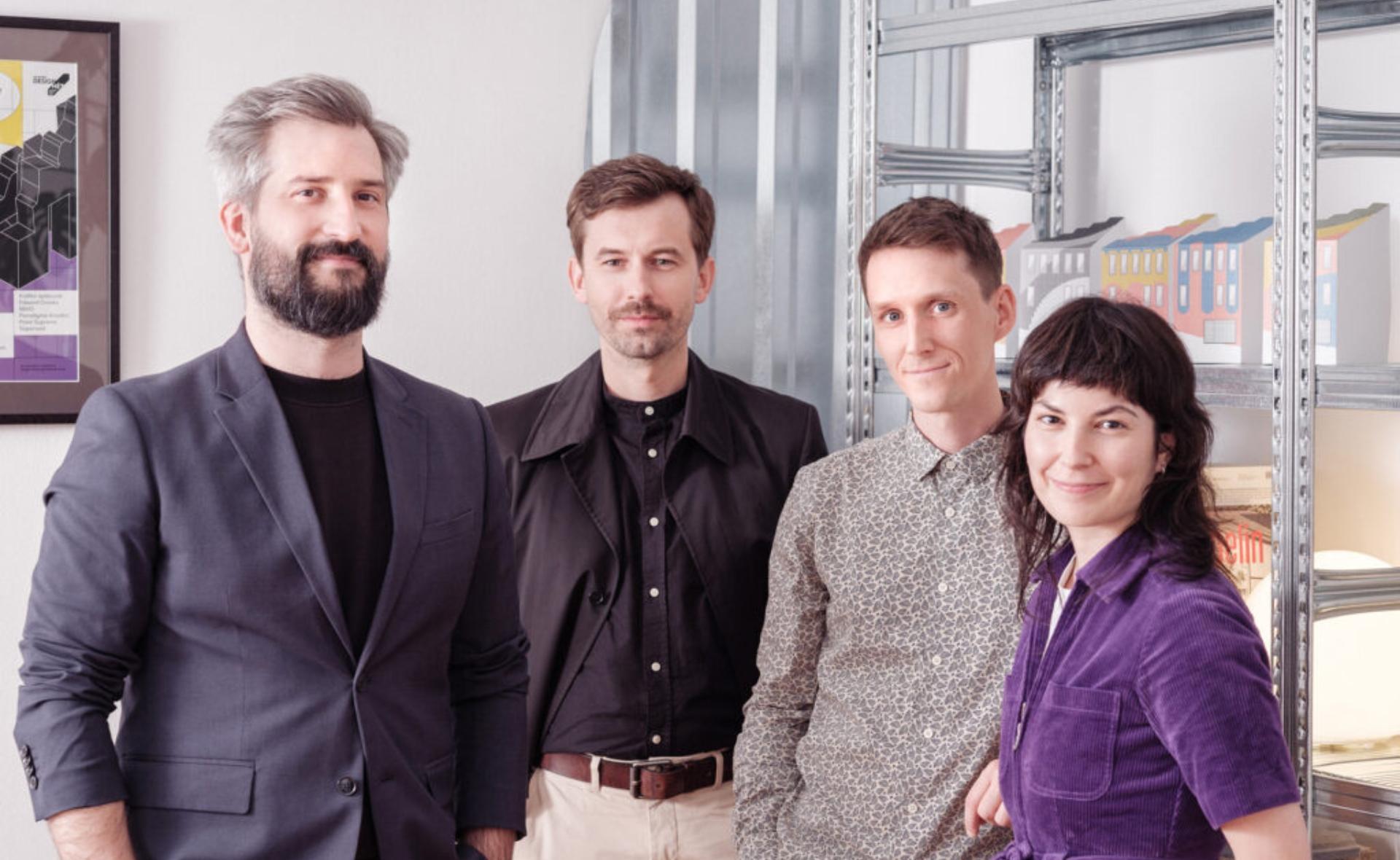78 E. Washington St., Chicago, IL 60602
For the very first time, Hungary is represented at the Chicago Architecture Biennial — North America’s leading international platform for contemporary architecture!
The 6th edition of the Biennial – SHIFT: Architecture in Times of Radical Change runs from September 19, 2025 – February 28, 2026 across iconic sites in Chicago. This global event gathers over 100 visionary architects, designers, and creatives from around the world to explore urgent questions of our time: housing, ecology, material innovation, and the future of our cities. All programs are free and open to the public.
Representing Hungary is the award-winning Budapest-based studio Paradigma Ariadné, known for blending theory, imagination, and storytelling in architecture. Founded in 2016 by Attila Róbert Csóka, Szabolcs Molnár, and Dávid Smiló and currently operated together with Lilla Árkovics, the studio has already made its mark internationally at exhibitions in Milan, Paris, Venice, Vienna, and beyond, and co-curated the Hungarian Pavilion at the 2021 Venice Architecture Biennale.
Their project for Chicago, The Adobe Fireplace, reimagines the Central European hearth — once the heart of every home, where families cooked, shared stories, and gathered for warmth. Using the humble, hand-shaped material of adobe, the installation reflects on continuity between past and present, and asks how tr aditional wisdom can inspire better futures in times of radical change.
Don’t miss this milestone moment for Hungary and for global architectural dialogue! Explore the experience SHIFT and see Paradigma Ariadné’s inspiring work in person.

About the creators
Founded in 2016 by Attila Róbert Csóka, Szabolcs Molnár, and Dávid Smiló, and operated together with Lilla Árkovics, Paradigma Ariadné is a Budapest-based studio using theory, imagination, and narrative in architecture. Their projects span public and private sectors, providing design solutions across scales and typologies. The studio has exhibited in Paris, London, Venice, Vienna, and the U.S., with features in The Architectural Review, Domus, PLOT, and Zeppelin. Paradigma Ariadné challenges conventional design through speculative and conceptual approaches. In 2024, they were shortlisted for the AR Emerging Architecture Award, affirming their place in the vanguard of contemporary European architecture.

The concept of the Adobe Fireplace
Looking back for inspiration and using ideas of the past and mix them with contemporary tendencies is a potential to create better built environments and societies in Times of Radical Change.
In Central European architecture, thanks to continental climate, we have hot summers and cold winters. Therefore most of our buildings of the premodern age and their close environment were fluid in functional use. In summertime the house and the whole garden with series of smaller edifices was an extended space of living. In winter, life contracted inward—not merely within walls but into the very heart of the house: the kitchen. Here, the great fireplace was more than a source of warmth—it was the soul of the home, an elemental force around which life revolved.
Families cooked, baked, and boiled; children and elders nestled against its radiant surface; stories were shared in its glow. It was not a mere object of function but a hearth of togetherness, unlike today’s silent ovens that, with the press of a button, perform their task in solitude.
This is also represented in the materiality of the fireplace which was mostly made of adobe, which is a material you can create and apply by bare hand, and the resolution of details of the
fireplace are also linked to the simple size of human hand. And last but not least the importance of the adobe fireplace was also represented in the ornamentation of it, which introduced knowledge of food production and consumption of centuries and natural elements or cultural references.
Therefore the architectural appearance of the adobe fireplace was rich and evolved in many ways throughout centuries and because the modernization of Central European states were delayed, still there are many buildings in Hungary that is operating with fireplaces. There is a continuity to which we can be attached. We would bring a redesigned contemporary piece of an adobe fireplace as an installation to the visitors of CAB, and invite them to understand its story and significance today and to show some answers it could give to the future.
